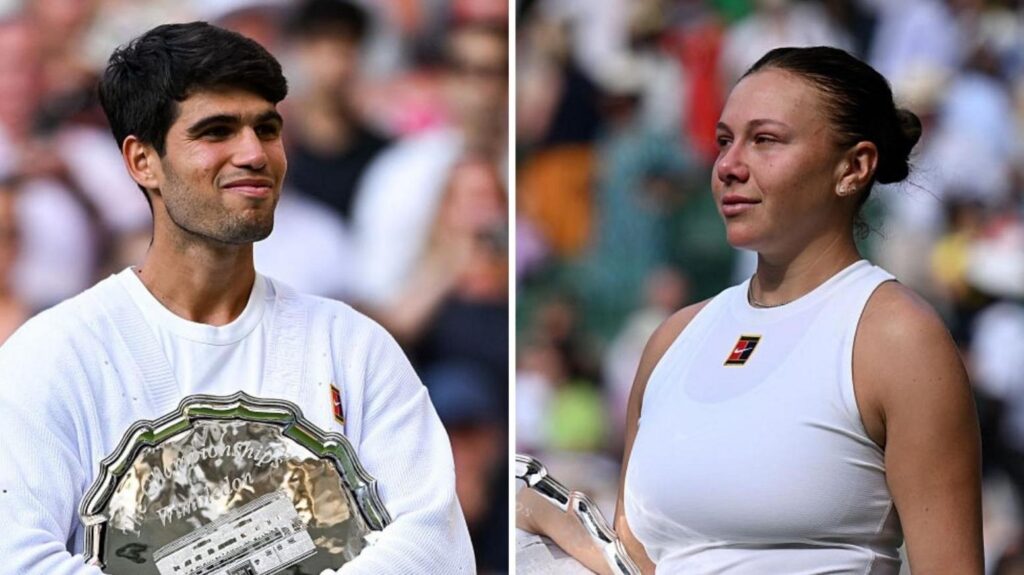Recent reports reveal a troubling rise in online abuse directed at players during the Wimbledon Championships. According to data shared exclusively with the BBC, the frequency of such abuse has nearly quadrupled in 2025 compared to the previous year. This alarming increase emphasizes the continuing issues of harassment and bullying that plague athletes in the modern digital era. The monitoring of this harassment was conducted using the Threat Matrix system, which allows for the detection and reporting of abusive content across various social platforms.
In the first half of Wimbledon this year, a staggering 1,902 abusive messages were identified, compared to just 511 during the same period in 2024. This dramatic uptick highlights the growing concern regarding the mental well-being of professional athletes, particularly as more of their interactions occur online. It appears that male players were more frequently targeted, with the three most abusive instances being directed at male competitors, contrasting with 2024 when two of the top three were female.
Carlos Alcaraz, a prominent figure in men’s singles, openly discussed the “cruel” abuse he experiences, particularly after his finals loss on Sunday. Amanda Anisimova, who was the runner-up in women’s singles, expressed her fear of checking her phone following her overwhelming defeat at the hands of Iga Swiatek. This sentiment resonates with many players who face the brunt of harsh and, at times, vitriolic online backlash following their performances.
The data used to track this abuse is derived from a collaboration between the All England Lawn Tennis Club and data science firm Signify. The Threat Matrix AI service scrutinizes public-facing social media accounts, manually flagging content that is deemed abusive or threatening on platforms such as X (formerly Twitter), Instagram, YouTube, Facebook, and TikTok. This system has been utilized for all players participating in the men’s and women’s singles, doubles, mixed doubles, and includes umpires as well as official Wimbledon accounts.
To date, over 2,916 posts or comments have been verified as abusive during Wimbledon, with a concerning 132 of these rated as “moderate” or “high” threat levels, meriting further investigation possibly involving law enforcement. Additionally, the analysis indicated that “angry gamblers” were responsible for 37% of detected abuse, a reflection of the emotional high stakes surrounding sports betting and its correlation with athlete treatment online.
The increase in reported abuse this year is partially attributed to enhancements made to the Threat Matrix after last year’s event, allowing it to more effectively identify evolving abusive tactics and troll accounts that repeatedly propagate the same hateful messages. Such enhancements are essential in addressing the complexity of online harassment, which continues to adapt as social media landscapes shift.
Prominent tennis players have begun vocalizing their experiences with online abuse, rekindling the conversation surrounding this vital issue. Katie Boulter, the British number one, recently shared her harrowing experiences during the French Open, where she received extensive trolling, including death threats. Post-final, Alcaraz highlighted the duality of social media: while receiving positive support from many fans, he remains weighed down by hurtful criticism. Such experiences leave many players apprehensive about engaging with their social media accounts after disappointing losses.
Exemplifying the emotional toll of online interactions, Anisimova admitted that she hesitated to check her messages following her crushing defeat. Other players like Taylor Fritz echoed this sentiment, expressing reluctance to access social media platforms post-loss due to the anticipated barrage of negativity. Former Olympic champion Belinda Bencic lamented the dehumanizing nature of the messages athletes receive, reinforcing the necessity for better regulations and accountability regarding online interactions.
The All England Club has affirmed its commitment to player safety, stating that the well-being of its athletes is paramount. They expect action against perpetrators through their monitoring systems, illuminating the need for ongoing discussions about the responsibilities of social media companies in curbing such abusive behavior. As the conversation continues, the hope is that significant change can be enacted to protect athletes in the digital age while fostering a supportive environment free of online abuse.











